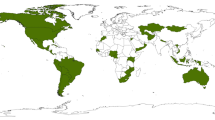Abstract
An analysis of pre- and perinatal risks in very low birth weight (VLBW) infants showed that children later suffering from severe neurodevelopmental sequelae were exposed to a significantly higher number of risk factors compared to normally developed VLBW controls. This was not only due to a higher incidence of specific risks, but to the accumulation of risk factors, which consequently made an ischaemic or haemorrhagic brain lesion more likely to occur. This result suggests that brain lesions in VLBW infants are essentially multifactorial. The improved outcome of VLBW infants cared for in the NICU of the Children's Hospital of Tübingen during 1977–1983 was accompanied by a decreasing incidence of obstetrical and neonatal risks. This was mainly due to more frequent transport in utero, earlier obstetrical intervention, and immediate postnatal stabilization of the infant's condition. These changes in perinatal care strategy evidently favoured the postnatal course and thus also improved the neurodevelopmental outcome.
Similar content being viewed by others
Abbreviations
- VLBW:
-
very low birth weight
- NICU:
-
neonatal intensive care unit
- ICH:
-
intracranial haemorrhage
- IVH:
-
intraventricular haemorrhage
- CSF:
-
cerebrospinal fluid
References
Beverly DW, Chance GW, Inwood MJ, Schaus M, O'Keefe (1984) Intraventricular haemorrhage and haemostasis defects. Arch Dis Child 59:444–448
Clark CE, Clyman RI, Roth RS, Sniderman SH, Lane B, Ballard RA (1981) Risk factor analysis of intraventricular haemorrhage in low-birth-weight infants. J Pediatr 99:625–628
Friis-Hansen B (1985) Perinatal brain injury and cerebral blood flow in newborn infants. Acta Paediatr Scand 74:323–331
Fujimura M, Salisbury DM, Robinson RO, Howat P, Emerson PM, Keeling JW, Tizard JPM (1979) Clinical events relating to intraventricular haemorrhage in the newborn. Arch Dis Child 54:409–414
Haas G, Buchwald-Saal M, Leidig E, Mentzel H (1986) Improved outcome in very low birth weight infants from 1977 to 1983. Eur J Pediatr (in press)
Largo RH, Wälli R, Duc G, Fanconi A, Prader A (1980) Evaluation of perinatal growth. Helv Paediatr Acta 35:419–436
Lou HC (1985) Perinatal hypoxic-ischaemic brain damage and periventricular haemorrhage. In: Harel S, Anastasiow NJ (eds) The at-risk-infant: Psycho/socio/medical aspects. Brookes, Baltimore London, pp 153–157
McDonald MM, Johnson ML, Rumack CM, Koops BL, Guggenheim MA, Babb C, Hathway WE (1984) Role of coagulopathy in newborn intracranial hemorrhage. Pediatrics 74:26–31
McDonald MM, Koops BL, Johnson ML, Guggenheim MA, Rumack CM, Mitchell SA, Hathaway WE (1984) Timing and antecedents of intracranial hemorrhage in the newborn. Pediatrics 74:32–36
Mentzel H (1984) Sectio bei Frühgeburt aus der Sicht des neonatologen. Indikation und Grenzen. Gynäkologe 17:243–249
Pape KE, Wigglesworth JS (1979) Haemorrhage, ischaemia and the perinatal brain. SIMP with Heinemann, London
Papiernick E, Bouyer M, Dreyfus J, Collin D, Winisdorffer G, Guegen S, Lecomte M, Lazar P (1985) Prevention of preterm births: A perinatal study in Haguenau, France. Pediatrics 76:154–158
Papile LA, Munsick-Bruno G, Schaefer A (1983) Relationship of cerebral intraventricular hemorrhage and early childhood neurologic handicaps. J Pediatr 103:273–277
Perlman JM, McMenamin JB, Volpe JJ (1983) Fluctuating cerebral blood flow velocity in respiratory-distress syndrome. Relation to the development of intraventricular hemorrhage. N Engl J Med 309:204–209
Prechtl HFR (1980) The optimality concept. Early Hum Dev 4:201–205
Stanley FJ, Atkinson S (1981) Impact of neonatal intensive care on cerebral palsy in infants of low birthweight. Lancet II:1162
Stewart AL, Thorburn RJ, Hope PL, Goldsmith M, Lipscomb AP, Reynolds EOR (1983) Ultrasound appearance of the brain in very preterm infants and neurodevelopmental outcome at 18 months of age. Arch Dis Child 58:598–604
Thompson MH, Khot AS (1985) Impact of neonatal intensive care. Arch Dis Child 60:213–214
Usher R, McLean F (1969) Intrauterine growth of live-born caucasian infants at sea level: Standards obtained from measurements in 7 dimensions of infants born between 25 and 44 weeks of gestation. J Pediatr 74:901–910
Author information
Authors and Affiliations
Rights and permissions
About this article
Cite this article
Haas, G., Asprion, B., Leidig, E. et al. Obstetrical and neonatal risk factors in very low birth weight infants related to their neurological development. Eur J Pediatr 145, 341–346 (1986). https://doi.org/10.1007/BF00439235
Received:
Accepted:
Issue Date:
DOI: https://doi.org/10.1007/BF00439235




